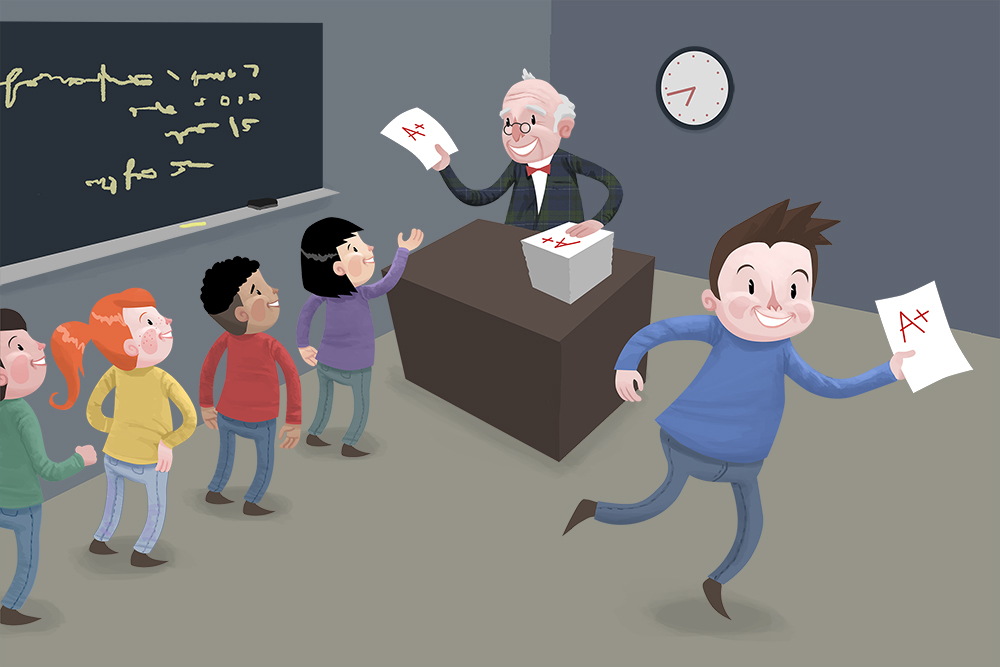The adjusted GPA: Statistician offers possible cure for grade inflation
Illustration: Division of Research
Nearly two decades ago, Texas A&M University statistician Valen E. Johnson found himself in the trenches of one of the most contentious fights in higher education: curbing grade inflation. Today, he is watching from the sidelines as a Texas legislator crafts a bill that aims to bring the debate to the forefront in the Lone Star State.
As a professor at Duke University in 1997, Johnson became the face and statistical muscle behind a first-of-its-kind effort to address grade inflation. The plan would have created an adjusted grade-point average (GPA), but it was defeated because of opposition, mostly from faculty members in the humanities and students worried about having lower GPAs.
Still, the phenomenon of instructors awarding higher grades persists. A recent analysis of 200 colleges and universities published in the Teachers College Record found that 43 percent of all letter grades awarded in 2008 were A’s, compared to 16 percent in 1960. And Harvard’s student paper recently reported that the median grade awarded to undergraduates at the elite school is now an A-.
#TAMUresearch


